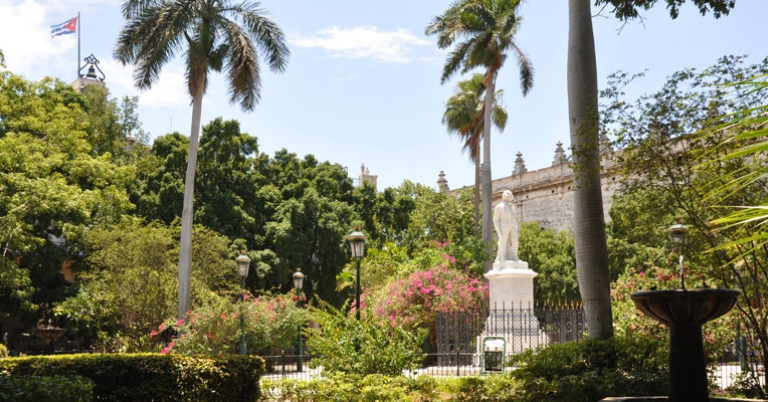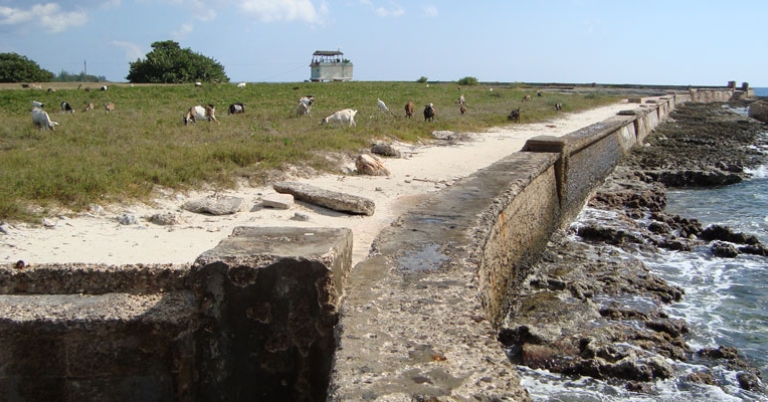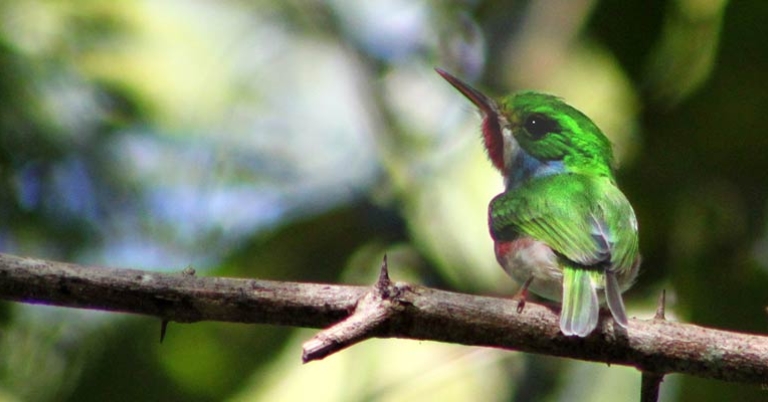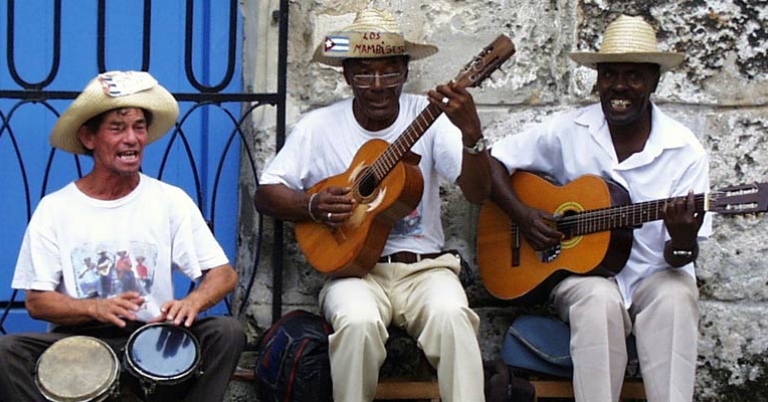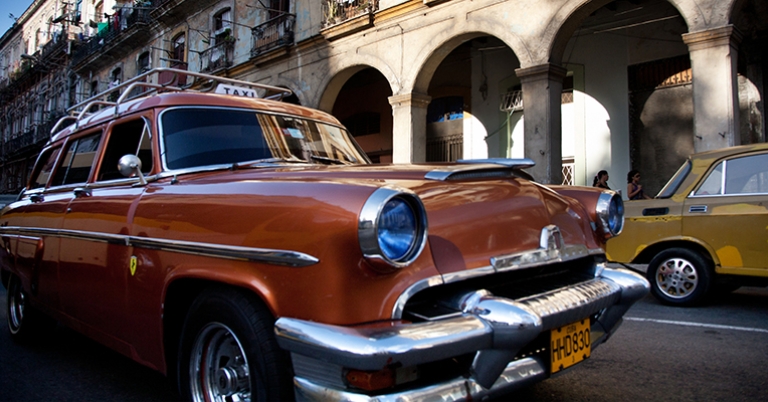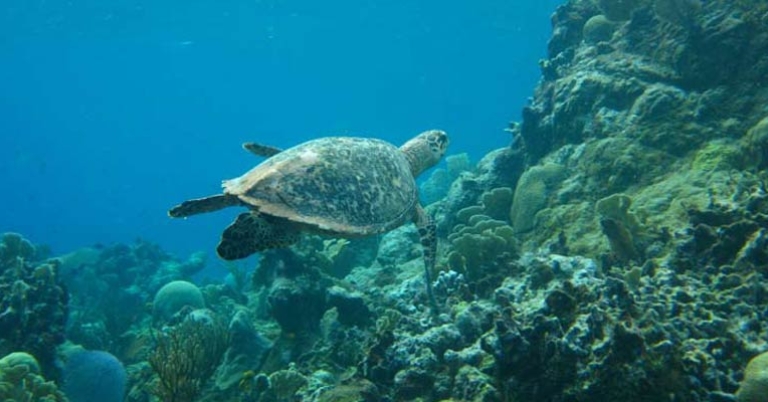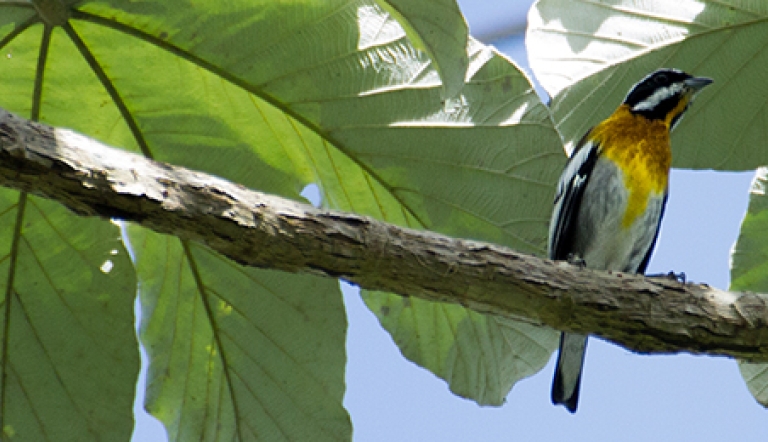Essentials of Cuba | A Holbrook Travel 50th Anniversary Trip
About this trip
Join Andrea Holbrook in exploring this complex and fascinating country. This program explores several natural areas that are our favorites and offers insight into Cuban culture and society today. In just over one week, we will experience the western province of Pinar del Río with its Sierra del Rosario mountain range filled with underground caves and rivers and home to wondrous geological formations called mogotes, limestone hills that sit like bread loaves in the Viñales Valley. We will visit one of the important wetlands in the Caribbean basin called Zapata Swamp, home to a number of endemic birds including the smallest bird in the world, the Bee Hummingbird, or Zunzuncito as it is known in Cuba. In the Zapata area, we can also snorkel in the clear blue waters of the Bay of Pigs (yes, the site of the failed US invasion in 1961). And in Havana, we will explore the history, the people, and the confounding realities of Cuba today. Join Andrea in exploring one of her favorite places in the world as part of Holbrook’s 50th Anniversary!
Highlights
- Experience the intense visual beauty of Havana in all its decadence and all its history. Enjoy a walking tour with Jaime Rodríguez, one of the three architects who initiated, in the early 1980s, the project to restore Old Havana, undertaken by the Office of the Historian of the City.
- Learn about the complexities of Cuba and its economy while enjoying café or rum in the home of Pepe and Cecilia Viera. Pepe is a retired attorney and former diplomat. He has translated several books of known Cuban scholar Louis Pérez. And Cecilia is probably the most gracious woman in Cuba.
- Snorkel in the Bay of Pigs and experience the marine life and pristine beauty underwater and above ground. At the same time, marvel that the world almost came to a standstill in the history surrounding this site during the Cuban missile crisis and the failed US invasion here.
- Visit the home of Nils Navarro, wildlife artist and author of the field guide “Endemic Birds of Cuba,” and learn about a life dedicated to nature and art.
- Gain an understanding and appreciation of the Cuban people, whose resilience and fortitude in the face of immense challenges will remain with you all the days of your life.
- Pack a great deal of supplies to leave in Cuba, and bring along a good sense of humor and goodwill.
$2,500
Per person
About this price
Land cost only. Does not include round-trip airfare to and from destination.
Single room supplement $475
What makes us different
Rich content
Carbon offsetting
Wildlife up-close
Local cuisine
Cultural Discovery
Support local communities
Daily Itinerary
Print ItineraryOld Havana
Old Havana
Zapata
Zapata
Zapata
Vinales
Vinales
Old Havana
Departure
Pricing
Print Pricing$2,500
Per person
About this price
Land cost only. Does not include round-trip airfare to and from destination.
Single room supplement $475
What's Included
- Activities and meals as mentioned in itinerary
- Full time guide for the duration of your program
- All Tips except Guide and Driver
- Arrival and departure transfers based on individual flight schedules
- Cuban tourist visa ($65.00)
- Non alcoholic beverage with meals
- Carbon Offset
What's Not Included
- International airfare
- Items of personal nature
- Tips for guide and driver
- Travel Insurance
Pricing Details
A $2500 per person deposit and enrollment form is due to hold your space on this trip. This deposit is refundable 95 days prior to departure excluding a $2500 cancellation fee. Cancellations after this date are non refundable.
Holbrook Travel strongly recommends the purchase of travel protection for medical emergencies while traveling and to protect your investment. Please note the purchase of Cancel for Any Reason Coverage or to exclude pre-existing conditions with Trip Cancellation coverage may require policy purchase within 10-14 days of your initial deposit, depending upon the provider.
Single room supplement $475
Final payment due date: January 30, 2024
Travel Info
Print Travel InfoEntry & Exit Requirements
U.S. citizens need a valid passport and a tourist card to enter Cuba. Passports must be valid at least six months after the date of entry and have at least two blank pages for entry/exit stamps.
Holbrook Travel will purchase and provide tourist cards. One half of the tourist card/visa will be collected upon arrival in Cuba. Keep the other half safely with your passport, as it will be collected from you upon your departure from Cuba. If it is lost or misplaced, the replacement cost is roughly $100.00 USD and can be purchased at the airport prior to departure.
If you are not traveling with a U.S. passport or you are a Cuban-born person, please check with the Cuban Embassy for requirements based on your nationality. Also, be sure to have your required documents (passport, remaining half of visa) for re-entry into the U.S.
Please note: The U.S. Department of Treasury, Department of Foreign Assets Control (OFAC) requires that all travelers to Cuba retain itineraries for at least 5 years.
Health Information
IMMUNIZATIONS
The Centers for Disease Control recommends that all travelers be up to date on routine vaccinations such as measles-mumps-rubella (MMR) vaccine, diphtheria-pertussis-tetanus vaccine, varicella (chicken pox) vaccine, and your yearly flu shot before every trip.
There are no vaccinations required for entry into Cuba, unless you are traveling from a country where yellow fever transmission is a risk, in which case proof of yellow fever vaccination is required. The CDC recommends vaccination against hepatitis A, hepatitis B, and typhoid for most unvaccinated travelers to Cuba.
Please consult your physician for additional information and recommendations based on your individual circumstances.
INSECT-BORNE ILLNESSES
Dengue fever and Zika virus are known to be present in Cuba. Travelers to Cuba should protect themselves against insect bites: Cover exposed skin with lightweight, long-sleeved shirts and pants, consider treating clothes with permethrin, and use an insect repellent containing an active ingredient like DEET or picaridin. Apply sunscreen first, followed by the repellent (preferably 20 minutes later). As a precaution, the CDC advises women who are pregnant to consider postponing travel to any area where Zika virus transmission is ongoing.
SUN EXPOSURE
The effects of the sun can be damaging to the eyes and skin. Spending time outdoors exposes you to the sun’s harmful ultraviolet (UV) rays, even on cloudy days. To protect yourself from the sun, use a broad spectrum sunscreen of at least SPF 15, protect skin with clothing, wear a wide-brimmed hat and sunglasses, and drink plenty of fluids.
Travelers’ Diarrhea
The CDC warns that travelers’ diarrhea is the most frequent health problem for travelers worldwide. To avoid contracting this, use bottled water, which is about $1.50 to $2 for a small bottle purchased in your private home or casa particular and some restaurants. Water costs much less in stores.
Avoid ice and uncooked vegetables or peeled fruit. When in doubt, ask your trip leader. If you contract diarrhea, it is very important to drink large quantities of purified water with rehydration salts and consult your doctor for appropriate medication.
Resources
Print ResourcesPacking Recommendations
Everyone has personal preferences when it comes to packing; for this reason, the information below is offered as a general guide and not a definitive list. You know yourself best: Use your discretion and pack what you think will serve you, based on your personal preferences and specific itinerary.
You may find many of the items below in our Gear Store.
CLOTHING
Casual, comfortable clothing is suitable for most activities. You may wish to bring a slightly nicer outfit or two (eg sundress, polo shirt) if your itinerary includes dinners out or more formal activities.
Bring enough clothing suitable for the length of your program. If you plan to hand-wash items, remember that humidity may delay drying time.
Pack clothing that can be worn in layers to adapt to weather changes throughout the day. Clothing that wicks away moisture and dries quickly is recommended.
- A combination of short-sleeved and lightweight, long-sleeved shirts for sun and mosquito protection
- Shorts
- Lightweight, quick-drying long pants for sun and mosquito protection
- Undergarments
- Sleepwear
- Lightweight jacket or sweater/sweatshirt
- 1-2 bathing suit(s) for the beach, if applicable
- Socks – Bring extra pairs. For hikes, long socks that you can tuck your pant legs into are recommended to deter ticks.
- Shoes – Consider your specific itinerary when choosing footwear. For most programs, you’ll likely want at least one pair of comfortable, closed-toe walking or hiking shoes suitable for forest hikes and walking over cobblestones or other uneven terrain. Sturdier hiking boots may be appropriate for more rugged itineraries. In addition, many participants opt for a pair of sturdy sport-strap sandals (e.g. Keens, Tevas, or similar) and/or casual flip-flops or sandals. If you’re visiting the beach, you may also want a pair of aqua socks, reef walkers, or water shoes.
- Lightweight rain jacket, hooded poncho, and/or windbreaker
- Visor or wide-brimmed sun hat
- Bandana, scarf, or neck gaiter to protect against insects
Personal Toiletries
Pack toiletries based on your personal preferences and habits. Below are just a few recommendations to keep in mind.
- Shampoo, conditioner, lotion, deodorant/antiperspirant , etc. – If possible, avoid strong fragrances if you are sensitive to insect bites.
- Soap and washcloth or a small, quick-drying microfiber towel – Washcloths are not standard in all accommodations. If you normally use a washcloth, you may wish to bring one from home.
- Hairbrush, comb, hair ties, shower cap
- Toothbrush and toothpaste
- Razor
- Ear plugs, especially if you are a light sleeper
- Personal hygiene products
- Insect repellent with DEET or picaridin (see note below about treating clothing with permethrin)
- Sunscreen and lip balm with SPF – If you’ll be in the ocean, we recommend reef-safe sunscreen.
- Aloe vera gel
- A travel pack of tissues – also useful as napkins or toilet paper if needed
- Small towel – bath mats are not always provided in accommodations
In addition to your personal toiletries, it is useful to pack a small medical kit, which you can easily prepare. Helpful items might include: bandages, antihistamine, a pain reliever, motion sickness medication, anti-diarrhea medicine, individually wrapped pre-moistened towelettes and/or hand sanitizer, antibiotic ointment, anti-fungal cream, moleskin for blisters, eye drops, tweezers, a mini sewing kit, and an extra pair of disposable contact lenses or eyeglasses if you wear them.
Days before you leave home, you may wish to consider spraying any clothing, socks, and shoes that will be worn in lowland, tropical sites with permethrin, an anti-parasite medication, to repel irritating pests and prevent the spread of disease. A recommended brand is Sawyer. Carefully read all instructions before use. Please note permethrin is highly toxic to cats and fish, and some aerosol products may be harmful to birds. Side effects may include minor itching, burning, or redness. You may want to use a laundry marker to label and keep track of which socks are permethrinized. Only one application per item is necessary; permethrin on treated clothes remains effective through several washings. Permethrin should NOT be applied directly to skin.
Miscellaneous
Remember to pack valuables such as your passport, cash/credit cards, and medications in your carry-on luggage.
- Passport, visa, and photocopies of all travel documentation
- Personal insurance card and travel insurance information
- Money – Cash; small bills in good condition are recommended. Please note: Credit or debit cards that are drawn against accounts in the United States cannot be used in Cuba. Therefore, it is important to estimate the amount of cash that is necessary for travel.
- Prescription medicines (if applicable), with a copy of the prescription
- Yellow fever certificate (if required; only if arriving from a country where yellow fever transmission is a risk)
- Sunglasses with strap
- Small day pack for hikes and excursions
- Flashlight and/or head lamp
- Travel alarm clock or inexpensive waterproof wristwatch with alarm – Not all hotels provide alarm clocks.
- A pocket calculator or phone to assist with conversions and currency exchange
- Binoculars with lens cleaner
- Camera and related equipment, such as charger, lenses, and extra memory cards
- Reusable water bottle
- Non-perishable snacks
- Pocket-knife or multipurpose tool - Pack in your checked luggage
- Zip-top style bags – useful for packing toiletries, sorting clothing, storing damp or muddy shoes, or as a dry bag for protecting electronics
- Notepad or travel journal and pen
- Music or reading material for down time, long bus drives, or on the airplane, and a portable bright light to read by
- Collapsible walking stick with rubber tip
- A small quantity of laundry detergent if you’ll be washing clothing by hand
- Travel-size umbrella – Some people find this unwieldy to carry, while others find it offers better protection than a rain jacket alone.
- Money belt
- Chargers for electronics
- Converters and plug adapters for electronics

Questions
Contact Andrea Holbrook at Andrea@Holbrooktravel.com

